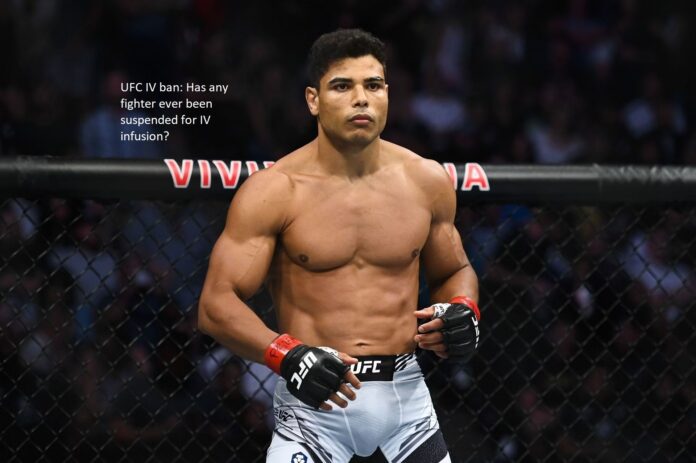It has been claimed that Islam Makhachev received intravenous (IV) infusion therapy prior to his fight with Alexander Volkanovski at UFC 284. At the just-completed UFC 284 pay-per-view event in Perth, Australia, Makhachev successfully defended his lightweight championship by outpointing featherweight champion Volkanovski by a razor-thin decision.
Dan Hooker, a teammate of Volkanovski’s, has however charged the Russian with cheating to make up for his pre-fight weight cut. For IV infusion therapy, which has been prohibited ever since USADA became the UFC’s anti-doping partner in 2015, several UFC athletes have previously faced suspensions.
B.J. Penn, a UFC legend, was given a six-month suspension by USADA in March 2016 for the improper use of an IV infusion therapy. At UFC 199, Penn was scheduled to make his two-year retirement come to an end to take on Cole Miller, however he voluntarily admitted the wrongdoing in May 2016. He asserted ignorance of this regulation because it was non-existent in 2014 when he last competed.
Brazilian middleweight contender Paulo Costa was given a six-month suspension in 2017 for twice using an IV. On June 2, 2017, Costa allegedly received an intravenous infusion (IV) of authorised medications, including saline solution and stomach medicine, totaling more than 100 ml over the course of a 12-hour period after weighing in for UFC 212 in Rio de Janeiro, Brazil. The incident was replicated that same year in November following a weigh-in for UFC 217 in New York.
Donald Cerrone has asserted in the past that he was granted a waiver even though the majority of UFC competitors are not permitted to rehydrate through intravenous procedures following weigh-ins. Because he is “missing 50 feet of intestines and half a stomach,” the Colorado native said that the UFC permitted him to use an IV after weigh-in because he cannot rehydrate as rapidly as other competitors.
The day before Floyd Mayweather Jr.’s highly anticipated bout against Manny Pacquiao, the United States Anti-Doping Agency (USADA) reportedly conducted a surprise drug test on the boxer and discovered proof of an illicit IV being used on the athlete, according to Thomas Hauser of SBNation.
Why is IV infusion treatment illegal?
A material is injected directly into a vein during an intravenous injection, also known as an IV infusion. When the ban was enacted in 2015, the MMA community was split.
According to USADA regulations, IV infusions are prohibited if more than 100 millilitres of the substance are delivered in a 12-hour period. The ruling is final, and the restriction is limited to how and how much of the substance may be used.
However, if an athlete needs an IV, a Therapeutic Use Exemption enables them to use the modality of treatment and go above the permitted amount. The exemption can be extended to cover forbidden substances by submitting two TUEs—one for the prohibited substance and another for the excess volume.
Since intravenous fluids help athletes perform better and recover faster by elevating their plasma levels, they are not permitted. The biological passport of an athlete can also be changed.

